For most of us, war is something we read or hear about. For the soldier, it is a test of nerves and a dance with death. Colonel (Retd) Ranbir Singh, VrC, tells us first-hand how a key Pakistan point was captured in 1965
The Kargil Battle – 17 May 1965, Kargil Sector and around.
Kargil is at 8000 feet altitude and located on National Highway 1-A between Srinagar and Leh in J&K. It is 64 km further up from Dras where 4 Rajput had won the ‘Battle Honour Zojila’ on 15 Nov 1948. Col Girdhari Singh, MC (Military Cross) and Bar, the then CO was awarded VrC (Vir Chakra). My father Brig Sukhdev Singh, MC, CO 1 Patiala was also awarded VrC in Zojila Operations and they too won the ‘Zojila Battle Honour’. Coming under the Snow Belt area, it is a high-altitude field area. The surrounding mountain ranges vary from 9,000 to 20,000 feet in height. Being part of a desert area, these features are bare and devoid of any flora. The terrain is most inhospitable with the high altitude reducing physical efficiency. The mountain spurs are narrow and steep. The ground configuration favours the defender, whereas a rugged and sharp climb is extremely cumbersome for the attacker.
River Indus flowing from North downwards meanders through Kargil separating Headquarters 121 Independent Infantry Brigade Group and 4 Rajput. In the May of 1965 Brig VK Ghai was the Brigade commander, which was directly under HQ 15 Corps. Rajputs was the only infantry battalion under this Brigade. Lt Col Sudarshan Singh, all of 6’2” smart Sardar, had taken over the command of Fourth from spirited Col KPP Nair around 10 May 1965. Lt Col (Maj Gen Retd) KS Bajwa matching in stature was commanding 85 Light Regiment located there. There was only one battery of 6 x 4.2 inch mortars having limited range of 4100 yards. The second battery arrived from Pathankot on 16 May and it was deployed at Harkabahadur Bridge, adjacent to River Shingo flowing from Pakistan side and merging into River Indus. This Artillery Regiment was only one year old and itching to draw first blood. In early May, the Sector was dormant, with normal and routine activity.
The bugging factor
China attacked and humiliated India in 1962. As if this was not enough, Pakistan inflicted insult by capturing portion of Indian Territory in the Kutch Sector of Gujarat in a surprise initiative in April of 1965. The Indian Government may have decided to tackle this diplomatically, but the army was decidedly unhappy. Such situations demoralise the army. There were undercurrents and hushed rumours doing the rounds to avenge the Kutch slur. Where and what should be the target, the capture of which will give the Indian army a tactical advantage?
Possible motivating factor
Destiny cannot be predicted, at best, it can only be conjectured. Delay is a known cause of bitterness leading to reservations at lower levels. The million dollar question was; will the Govt do the honours or will it be the army to steal the thunder by taking the all important command decision to even the score with Pakistan who was basking in the recent Kutch glory. Lo and behold, such an opportunity presented itself out of the blues to Brigade commander Brig Ghai. There were umpteen surmises as to what triggered this peaceful Sector into a volatile and happening place. Many juniors professed to have inside information on the subject. It is purported that a Demi Official letter from a senior commander did the trick. Mind you, as the hearsay goes, even the letter at best suggested the possibility of capturing the highest and most formidable PAK Post Pt 13620.
There is also another understanding that the then army commander Gen Harbaksh Singh verbally spoke to Brig VK Ghai who had served under him, suggesting the possibility of capturing Pt 13620. This massive feature not only looked down upon the Brigade Sector, but also dominated the entire Kargil valley and highway NH1-A. This dominance was both irksome and unpalatable. Brig Ghai deserves abundance of praise for his grit, determination and boldness of a true commander. By taking the all-important command decision of capturing Pt 13620, he became an elite and instant hero in the making. It is also true that, should your decision boomerang, there will be none to stand by you. Vagaries and spoils of war are a natural phenomenon in war.
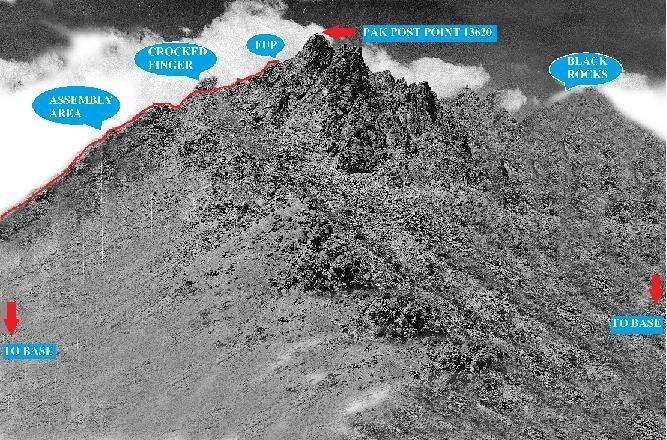
The orders
Brig VK Ghai commander 121 Independent Infantry Brigade Group called Col Sudarshan Singh, CO 4 Rajput, Col KS Bajwa, CO 85 Light Regiment, Maj DP Nayar and Maj Baljit Singh Randhawa to his Headquarters on the morning of 13 May 1965. Brig Ghai ordered 4 Rajput to capture Pakistan Post Pt 13620 and Black Rocks by 0500 hours on 17 May 1965. Since it was to be a silent attack, he ordered 85 Light Regiment, the artillery Unit to provide support on call. The enemy strength was a Regular coy minus at Pt 13620 with sections each of 3-inch mortars and MMGs besides their authorised weapons. A platoon minus defended Black Rocks supported by authorised weapons.
COs discuss initial plan
Both COs returned to Rajput office to work out further modalities for the attack. No one knew exactly what had transpired at the Brigade Headquarters and what the artillery CO was doing in Col Sudarshan’s office. Being of same seniority, they knew each other. After in-depth discussion, they coordinated artillery fire and formulated the attack plan. Col Sudarshan had just taken over the Unit and did not know the officers. He was to decide on companies and company commanders and on readjustment of defences. Reconnaissance (recce) was carried out for selection of a secure and viable attack route. When Col Sudarshan’s mind was clear and made up, he called in Major DP Nayar, Alfa Coy commander and Major Baljit Singh Randhawa of Bravo Coy (company). CO ordered Maj Randhawa’s company to attack and capture Pt 13620 by 0500 hours on 17 May 1965. Charlie Company commanded by Major Bikram Singh Chattri was to be his reserve. He was told to recce South West approach from Harkabahadur flank. Detailed orders would be given after recce reports. However, Col Sudarshan was already clear as to the approach and direction of attack as he had known this area previously. There is always some surprise element despite requisite planning. From Kargil, the snow on the massive Pak feature was not visible, as it was in reverse depression. However, actually there was plenty of snow in the selected FUP (forming up place) area and around. It was to be a silent attack on almost 14,000-feet-high mountain, despite there being snow and it being a full moonlit night. As, it was a silent attack meant to surprise the enemy, the artillery support was on call. Silent registration of targets was done off the map.
Special request
Major Randhawa came out of the COs office and reminded me of old resolve of fighting alongside in case of war. Both knew each other well and enjoyed mutual trust. What are you waiting for I asked him; go tell the CO. Therefore, Baljit asked the CO to allow Ranbir to go with his Company for the attack. The CO refused. Then I went to the CO and asked him to allow me to be the leading Platoon Commander for the attack. The CO again refused saying that I do not belong to Bravo Company. Luckily, CO 85 Light Regiment who was present in 4 Rajput CO’s office intervened asking Surdarshan to permit me as I was a volunteer. My CO then gave permission. Major General KS Bajwa, Retd has written many articles on the Kargil battle and mentioned about this incident. At the time, 4 Rajput defences in Kargil Sector were spread over about 13 km frontage.
Recce and preparation
The next two days were utilized on reconnaissance and preparations. Everyone got busy cleaning weapons and ammunition. Rehashing for occupation of defenses and relieving of attack companies was carried out on war footing by night. All this happened on the night of 13-14 May. The CO gave out his orders to his Operation Group on 15 May morning. Same night the companies moved along left flank from Kargil Base for own picket No 8 of Alfa coy under the cover of darkness. The climb was arduous negotiating narrow slopes in small groups in echelons. They rested in the reverse slopes and no movement during day was allowed.

Operation Group shown Enemy Defences
On 16 May morning, Major Randhawa along with essential officers and JCOs went up to the Crooked Finger area in twos and threes to show the enemy defences from behind big boulders. We all saw the PAK soldiers relaxing in the sun and smoke coming out from their langar (Kitchen). The CO also had a look at the layout. There was plenty of snow in the selected FUP (forming up place) where attacking companies were to deploy before the attack. From the FUP the climb up to the highest point was almost vertical, with huge boulders and a linear frontage. It meant that, even a platoon with two sections up could not move in the restricted area. Congestion of troops at any point would mean easy target for the enemy and more casualties for the attacker. The perimeter wall of stones around his defences was five feet high. Lieutenant Chattopadhaya with platoon minus was left behind while others returned to 8 Picket. Chattopadhaya was to keep the enemy post under surveillance and later mark the FUP by 0200 hours. This was about 300 meters from the enemy perimeter wall. The brave and spirited Lieutenant Chattopadhaya died in an encounter at Pattan near Srinagar in August 1965.
Move to Forming Up Place
The attacking troops started from 8 Picket at 2000 hours. The climb was extremely rigorous especially carrying company weapons. Picket pet dog Kalu walked alongside. He kept moving with us despite being told to go back. The companies were moving through the re-entrant to avoid detection. There were plenty of loose stones, which made the move even more difficult. At places men had to move on their fours. As planned, Chattopadhaya and his team had marked the FUP and assisted the troops to deploy there. Time was now 0200 hours 17 May 1965. It was biting cold on the snow. My platoon was ready to mount the attack. In other platoons, Lieutenants Vijay Aggarwal and Bhagrawat were also in position behind my leading platoon. Charlie Company with Major Bikram Singh Chettri sat poised behind us as reserves. The enemy post and the perimeter wall were visible in the moonlight. It was impossible to believe that the enemy had not heard the noise or seen the green uniform contrast on the snow. Moonlight shining on metal parts of the weapons could easily give away Rajput’s presence. At 14,000 feet with snow everywhere, it was freezing cold and holding weapons was painful with skin freezing on the metal parts. It was then that I suggested to Major Randhawa who was there, not to wait for ‘H’ hour of 0230 hours and immediately attack the enemy. Being from an army family, I had told the men to put two Patiala pegs of rum in their water bottles. They took a few swigs to warm-up and were ready to mount the attack.
Test of nerves and leadership
At 0200 hours, the leading troops crossed the (SL) Start Line. There was no fire from the enemy and men laboriously ploughed through snow and rocky area for 150 metres. Then all hell broke loose on the attacking men. The volume of fire was so heavy and intense that the troops took to the ground. The sudden and effective enemy fire suggested that they had come to know of Rajput’s presence and were ready waiting in stand to. It also showed good training for not opening fire from far. They patiently waited for us to get near and then fire for effect. It is here that leadership counts. Commanders at all levels pushed forward encouraging the men. Movement uphill through huge rocks was a challenge by itself. Momentum of attack is singular factor for success. Men were becoming casualties. The enemy had opened up with Light and Medium Machine Guns. They also used 2 inch and 3 inch Mortars. The troops at the Kargil Base watched the splash of mortars and flash of weapons fire. It resembled a huge Diwali firecracker show for them. There was firing on both sides. The Rajputs were closing in on the enemy perimeter wall despite multitude weapons fire and resultant casualties.
Perforating perimeter wall and the dogfight
Time was now 0315 hours. Rajputs had crossed the perimeter wall and hand-to- hand fight ensued. There was deafening noise of fire from both sides. The brave men forged ahead undaunted. The officers, JCOs and NCOs transcended their heroic leadership and led the men from the front. It was indeed a tango of life and death. It is only in battlefield that one can witness the real, life and death dance orchestrated. I moved towards a bunker with two men to silence an LMG, which was hindering the momentum. It was imperative to blunt this fire. While successfully assaulting the LMG position, Havaldar Om Parkash was killed inside the enemy bunker and I was wounded. With blood oozing out from the side of my head, I lay unconscious for some time. Major Randhawa had moved up to encourage the men to advance with speed. He told me to move back, but I refused and kept on moving with my Platoon.
The scene of the battle is difficult to describe. Had the dogfight been filmed by camera for viewing, people would have been reminded of movies like, ‘To hell and back’ and Haqeeqat. There was urgency and a frenzy-like do or die situation for both sides. The enemy was not comfortable with the progress the Rajputs had made. The entire area reverberated with war cries of “Bol Bajrang Bali Ki Jai” and “Allah Hu Akbar”. The surcharged atmosphere heightened dogmatism to succeed at all cost. The sound of firing was deafening. The dogfight was fierce and bloody. The valiant Rajputs were killing enemy soldiers and destroying weapons firing from the bunkers. There were so many Rajput soldiers lying dead or wounded. Attacks are best resorted to when the moon phase is dark, to avoid emotional and demoralising factor on seeing colleagues and buddies become casualties. Charlie Company was marking time to be unleashed. In the mêlée, some Charlie Company men became over-exuberant with josh and joined the battle royale. Sepoy Budh Singh of Charlie Company saw N/Subedar Girdhari Lal of Bravo Company moving toward an LMG, which was causing havoc. Budh Singh could not restrain himself and rushed to join Girdhari Lal. Both charged the LMG killing the enemy and destroying the gun position. While brave Girdhari Lal fell dead, Sepoy Budh Singh miraculously survived. Their bravery was rewarded with gallantry awards of Vir Chakra.
Death of a heroic leader
Time was now 0350 hours. Sensing that the daylight was not far, Major Baljit Randhawa took upon himself to accelerate the attack. He was displaying leadership and bravery of a rare order. He moved with the men firing inside the bunkers. When he entered a bunker, he was face to face with an enemy JCO. Both fired instinctively at each other. The enemy JCO fell dead and a Sten gun burst hit Major Randhawa in the chest, which proved fatal. I was at his side at the time. Major Randhawa was a diehard soldier and a leader. Though critically wounded, he kept encouraging the men to forge ahead with speed. Being next senior, I took upon myself to capture the highest point. The company senior JCO Subedar Bahadur Singh was doing a commendable job throughout the night to enthuse the men.
The final phase
Lieutenants Aggarwal and Bhagrawat moved up with speed and they were embroiled in hand-to-hand scuffles with the enemy. Lieutenant Aggarwal kept charging at the enemy. An enemy bullet wounded him in the thigh. Unmindful, he kept forging ahead with his platoon. Having survived Kargil, the valiant Lieutenant Bhagrawat died fighting in Uri Sector in September 1965. The time was now 0415 hours and day light at 14000 feet height was fast approaching. The CO, Col Sudarshan Singh moved right up. He had picked up a dead soldiers LMG and came forward firing from it. I told him about Major Randhawa. The CO said casualties would take place in battle. He told me to take over and complete the last phase of attack with aggressive speed. So encouraged, the Spartan Rajputs rushed forward towards the highest Point. The enemy was by now very jittery, unnerved and submissively demoralised. They had already lost 10 men and scores wounded. Fearing certain death of all remaining men, the enemy panicked and rolled down the steep reverse slopes to safety. The wounded enemy too did likewise. Seeing the complete enemy exodus, the brave Rajputs rushed through the last phase while firing at the running enemy. Time was now 0450 hours on 17 May 1965. Daylight had emerged and the Rajputs had completed the capture of Pt 13620 with missionary zeal.
Reorganisation
Immediately after success of the battle reorganisation is a must to be ready for any enemy counter-attack. I got on with this job. Procedures and battle drills are necessary to comply with to negate any enemy attempt to regain lost ground.
The Signal Platoon of the Unit had done a remarkable job of continuously laying telephone line with speed of the attack. Moment Pt 13620 was captured; the telephone line was through to the Brigade Headquarters via 4 Rajput base exchange. Immediately, the Tricolour, the Indian National Flag, was hoisted at the highest point, which was seen fluttering in glory by everyone at the Kargil Base, through binoculars. The CO informed the Commander of the success on telephone. As per procedure, vary light pistol was fired in agreed to colour sequence to announce and signal the success to all concerned.
Destiny, fate and aftermath
The enemy left behind 10 dead. They were able to roll down their wounded on the sharp reverse slopes.
The Rajputs lost their brave and dynamic coy commander Major Baljit Singh Randhawa. They also lost 1 JCO and 13 Other Ranks. Besides me, lieutenant VK Aggarwal and 50 Other Ranks were wounded.
The spoils of war
Captured Trophies: The Unit captured 2 x Medium Machine Guns, 2 x 3 inch Mortars and many small arms with plenty of ammunition. MMG’s and Mortars were given to 4 Rajput as War Trophies and these are kept and displayed in the Unit Quarter Guard. These battle souvenirs remain emotional link with the past, and act as morale and esprit de corps multipliers for the new generation.
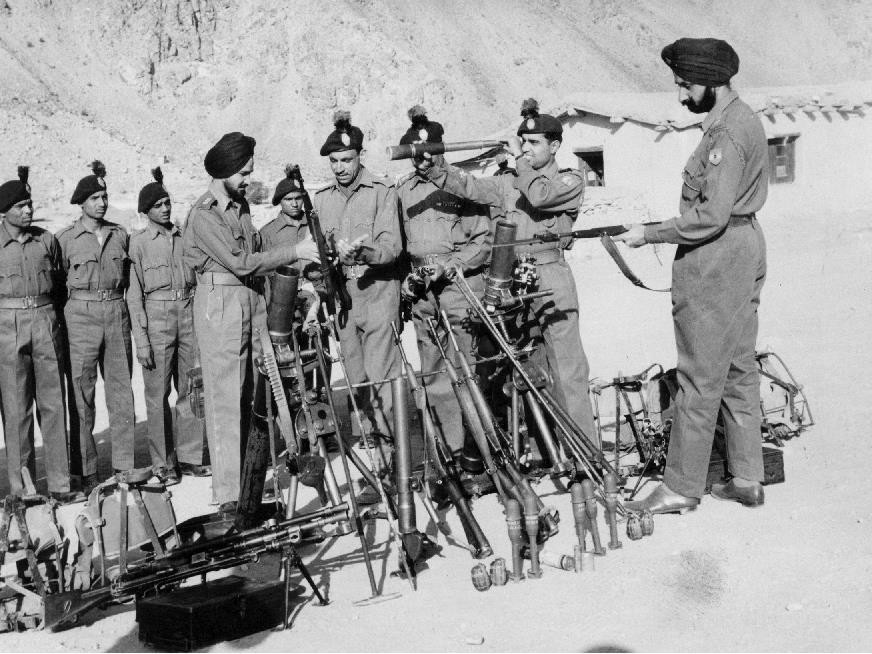
Honours and Awards: Theatre Honour was awarded to the Unit. 4 Rajput received four immediate awards, Maj Randhawa MVC (posthumous) Capt Ranbir Singh, Naib Sub Girdhari Lal and Sepoy Budh Singh Vir Chakra. Major DP Nayar and Captain SN Bhatnagar were awarded Mention in Dispatches. The Commander Brig VK Ghai of Kargil was awarded VSM Class-1.
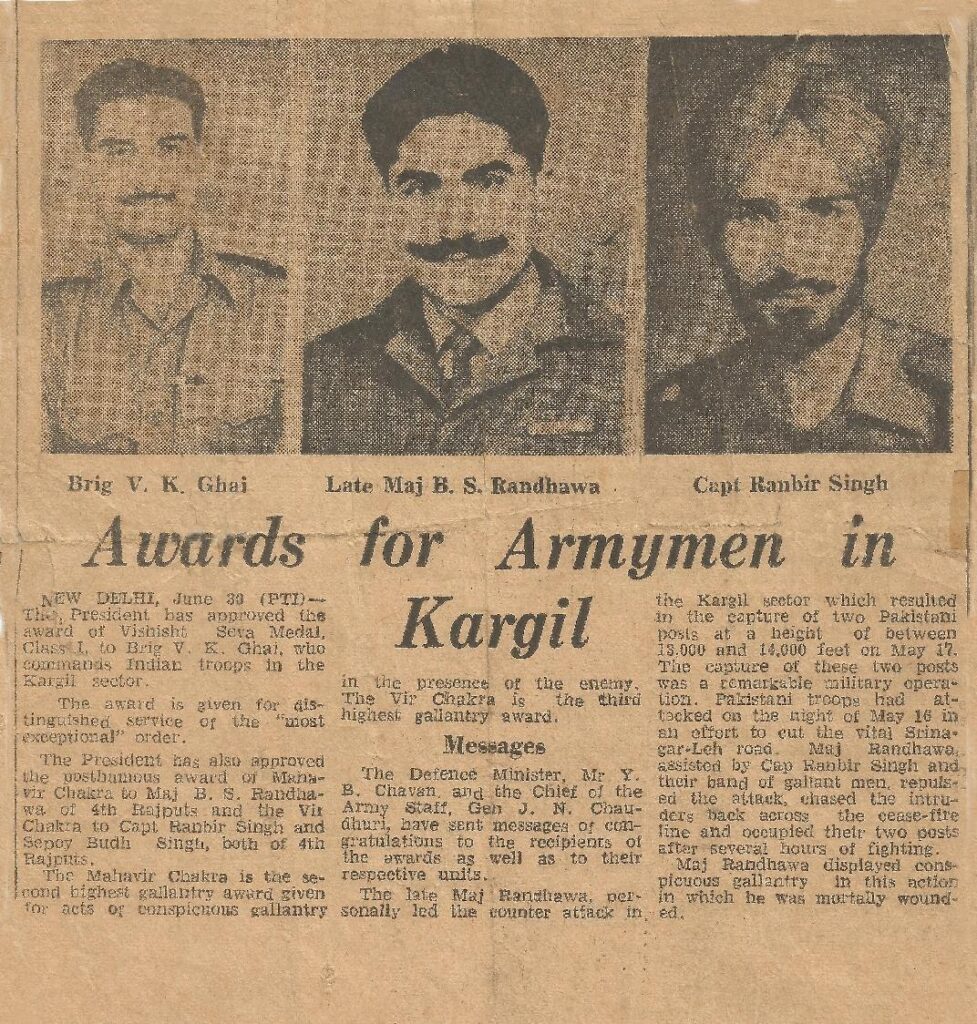
Heroism and cimmortalised
There is a War Memorial at Kargil in memory of those who sacrificed their lives for capture of Pt 13620. This feature has been named as Baljit Post in memory of Major Baljit Singh Randhawa, MVC. I (Ranbir) went to deliver Major Randhawa’s Ashes to his Family at his Village Isapur near Amritsar.
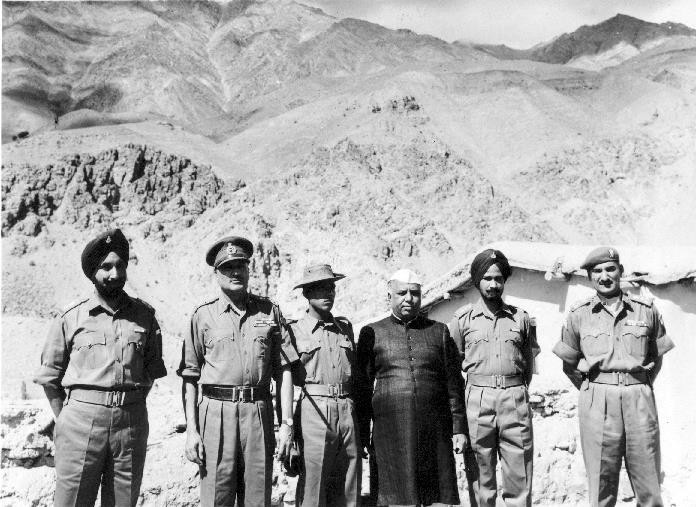



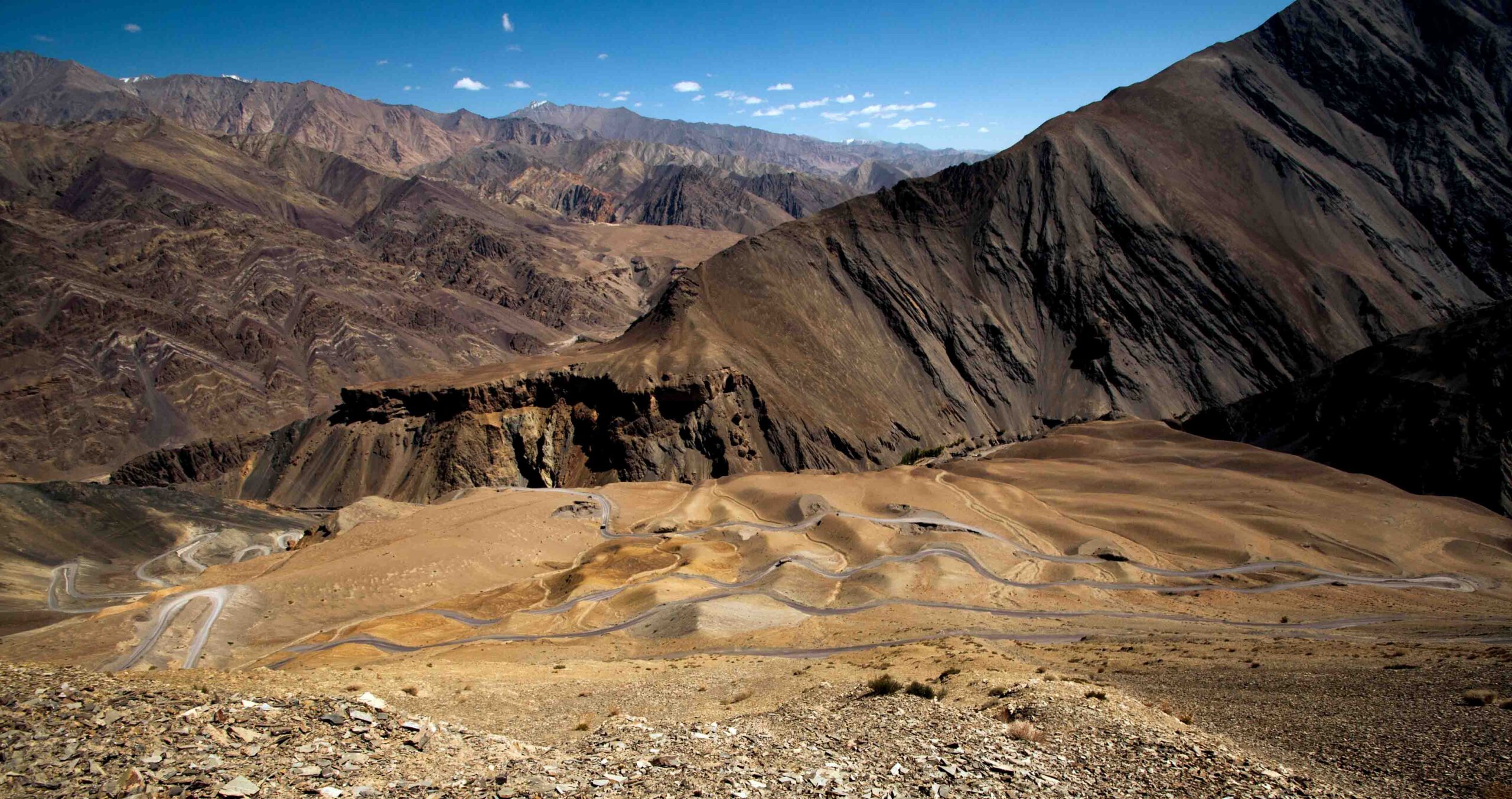





Excellent article by Col Ranbir Singh. I have already put my comments on the article.My Squadron based at Srinagar carried out sorties to Kargil every day depending on the weather. Appreciate if I could get them: # of Col Ranbir Singh. My M:- *********.
Wg Cdr Ajitsinhji Jhala